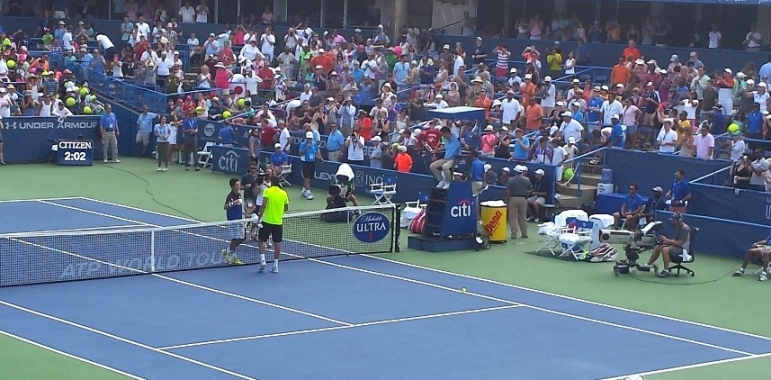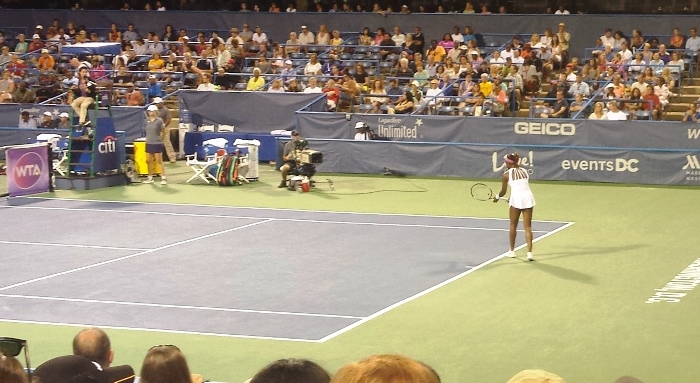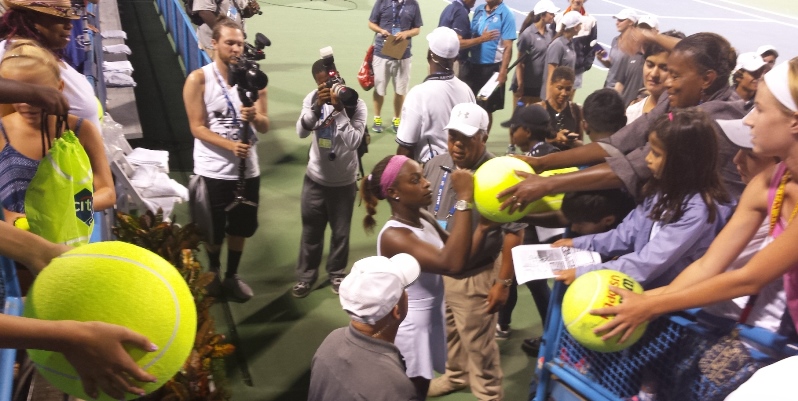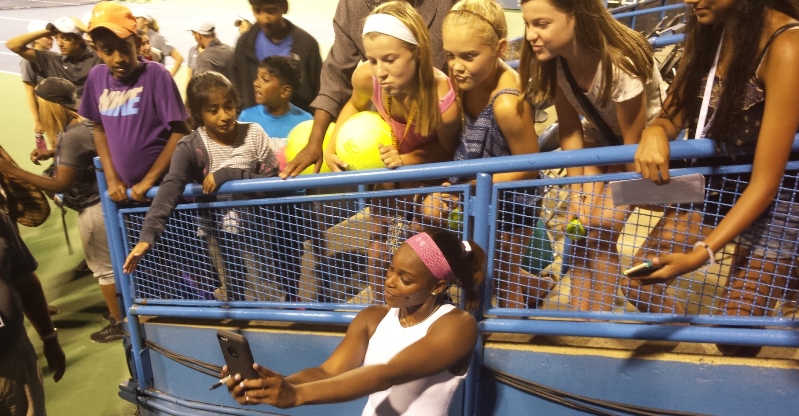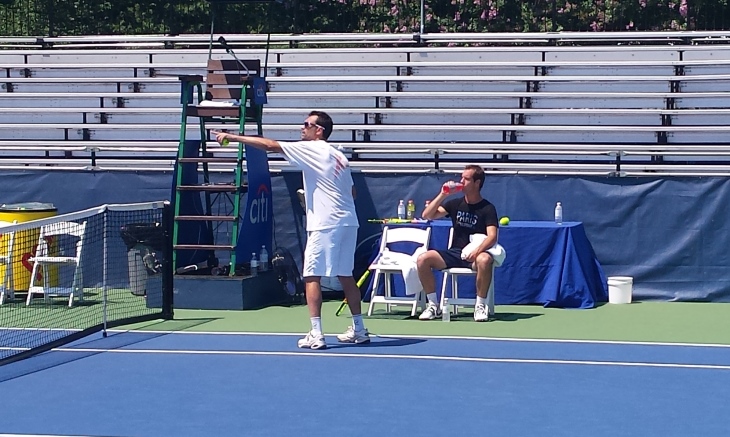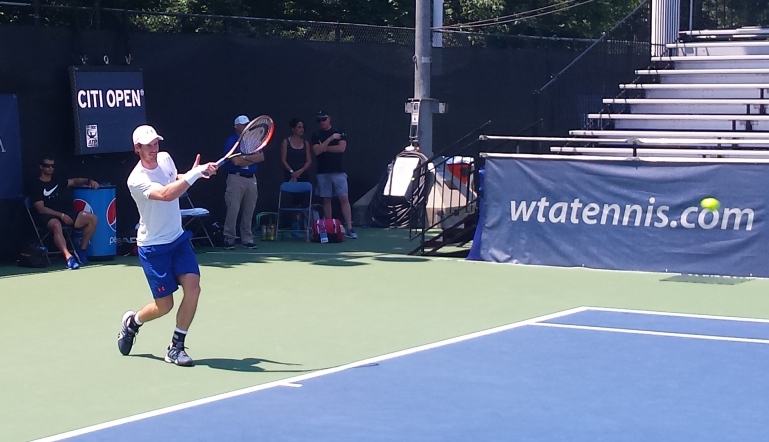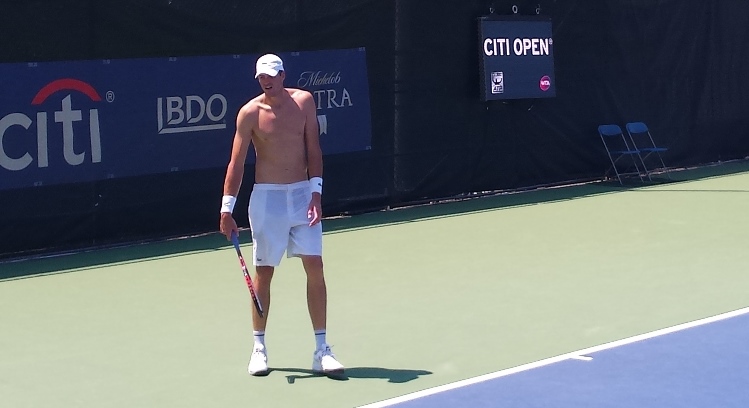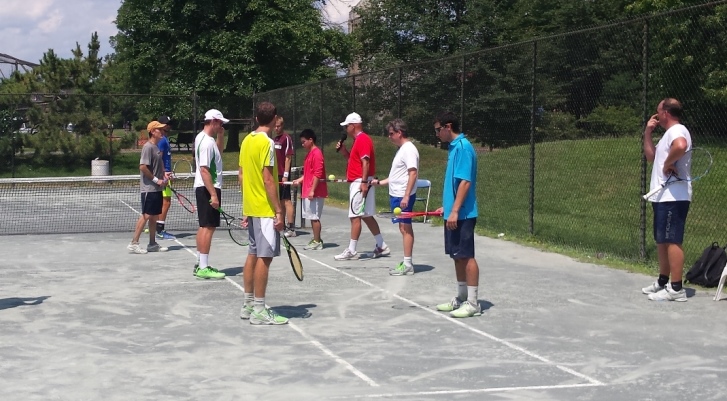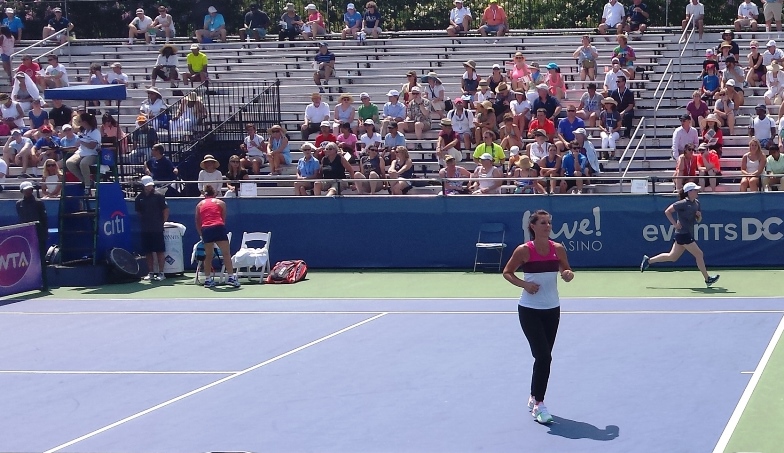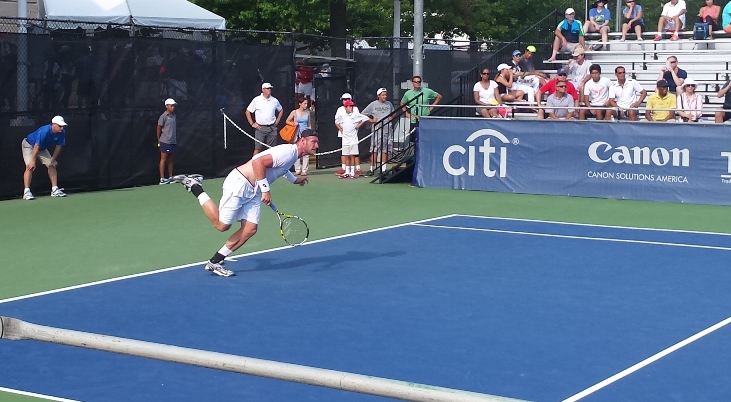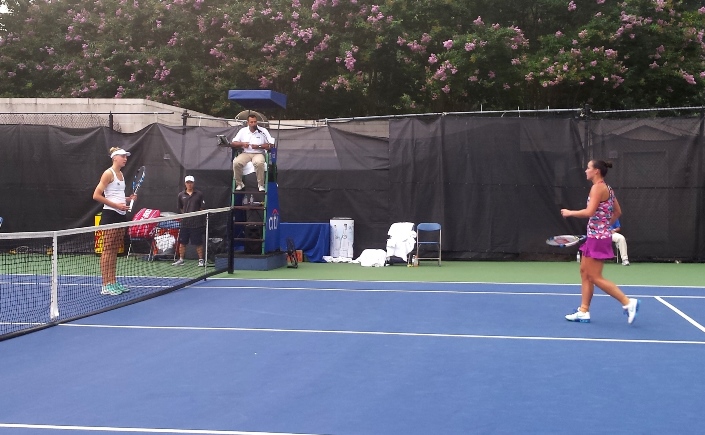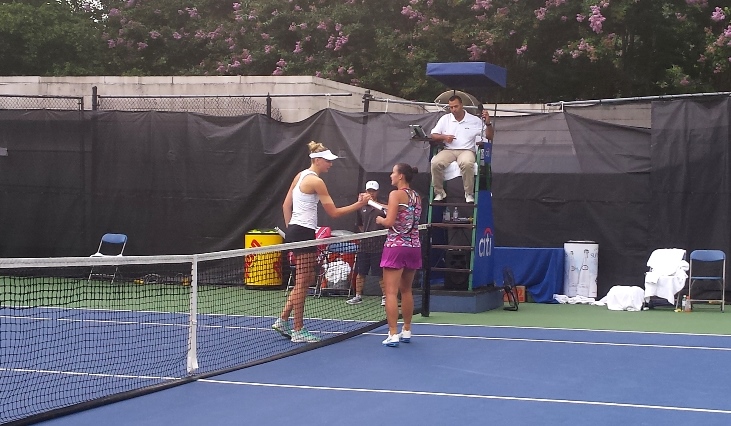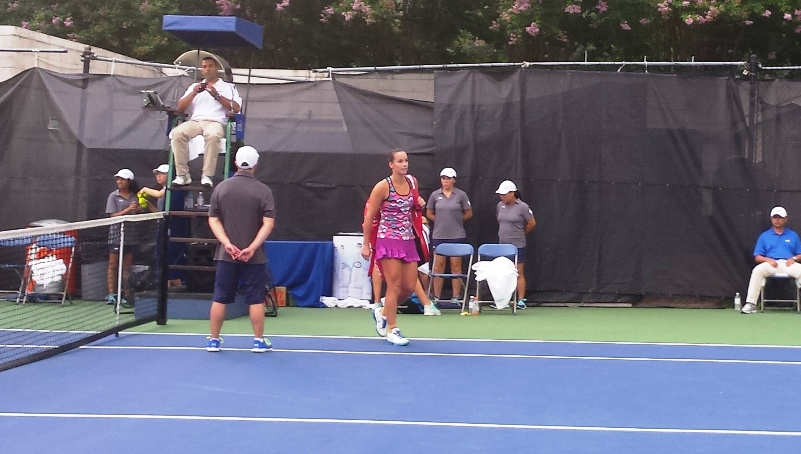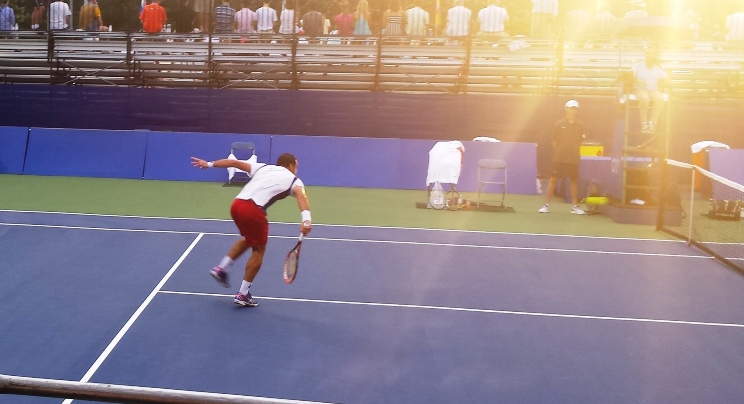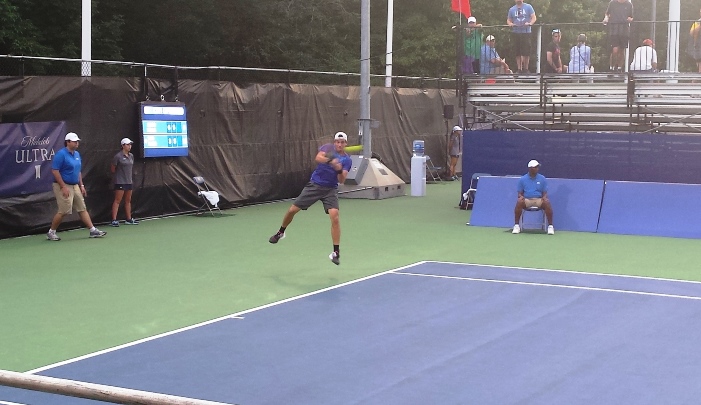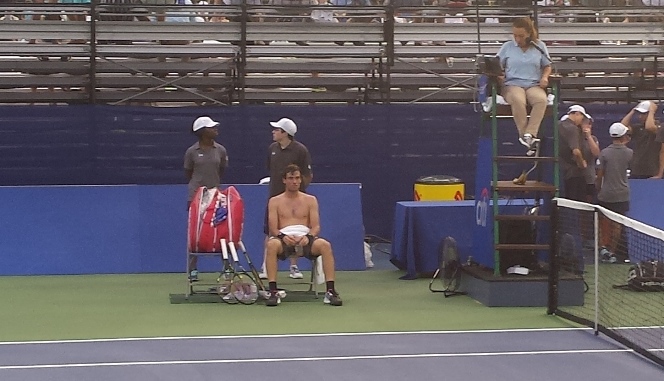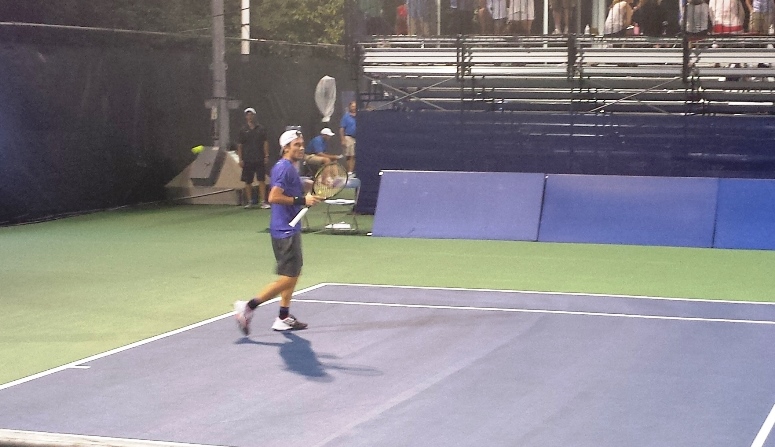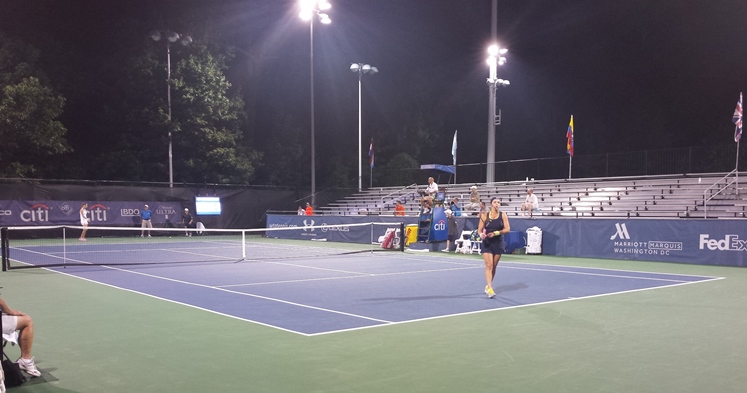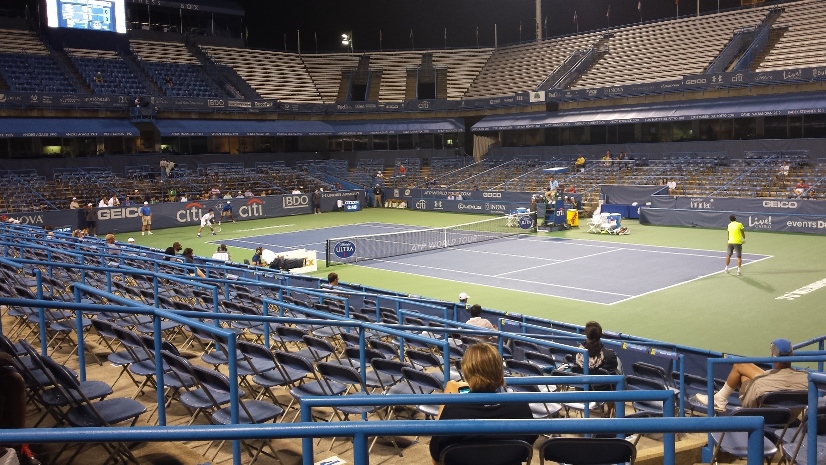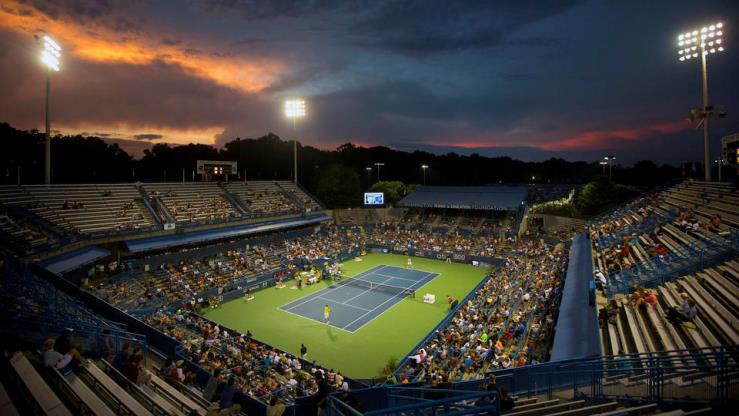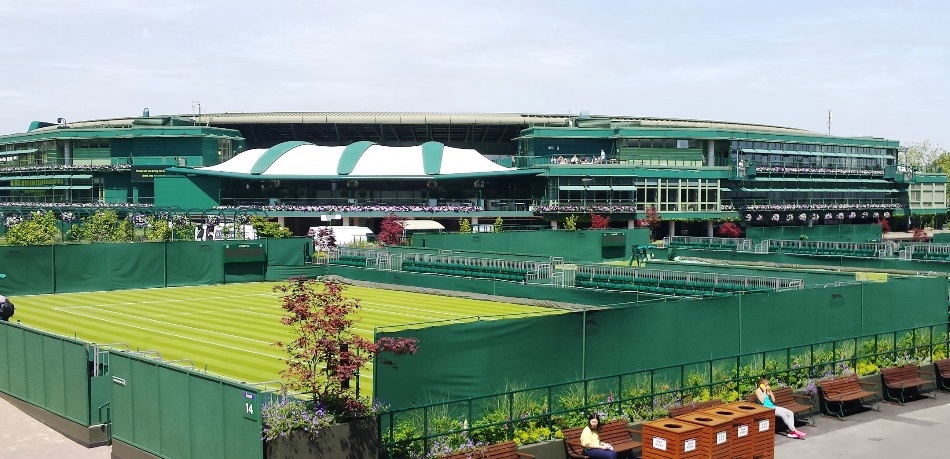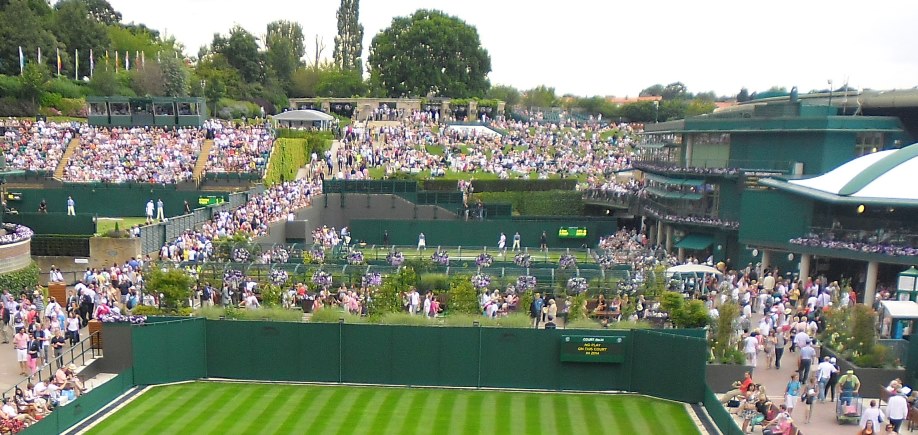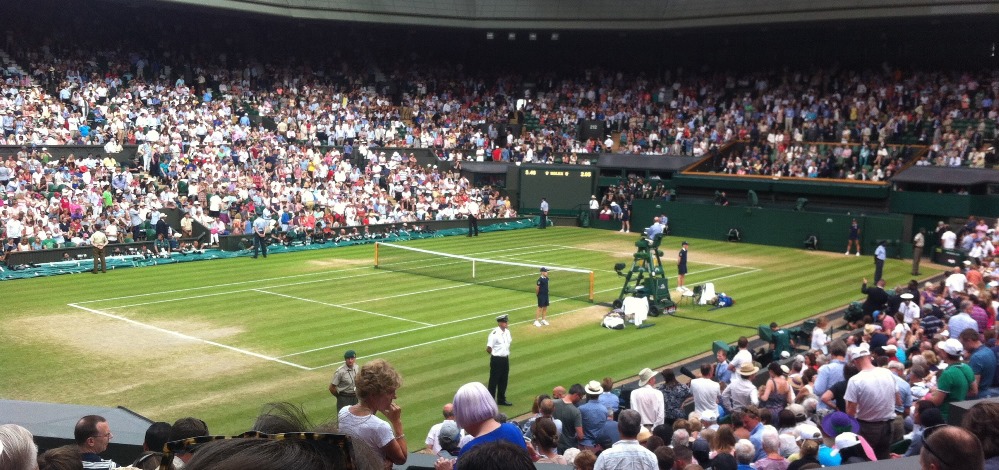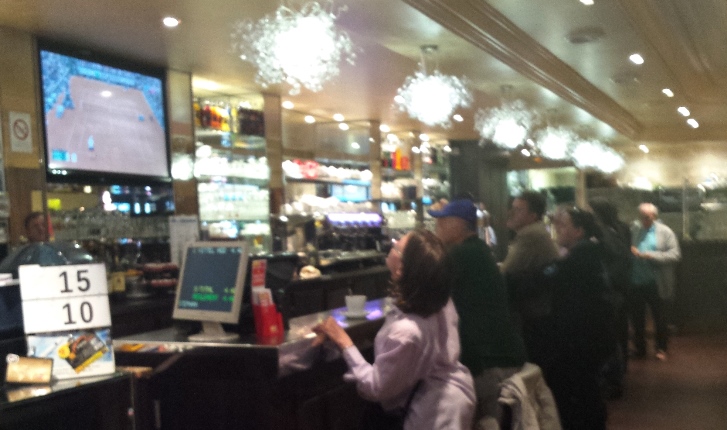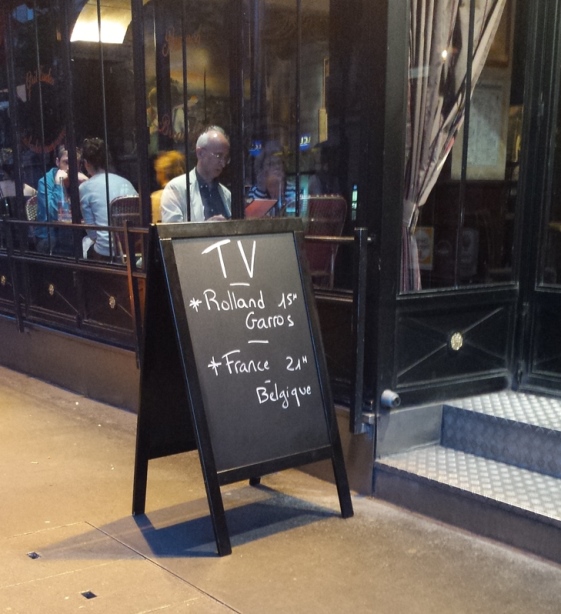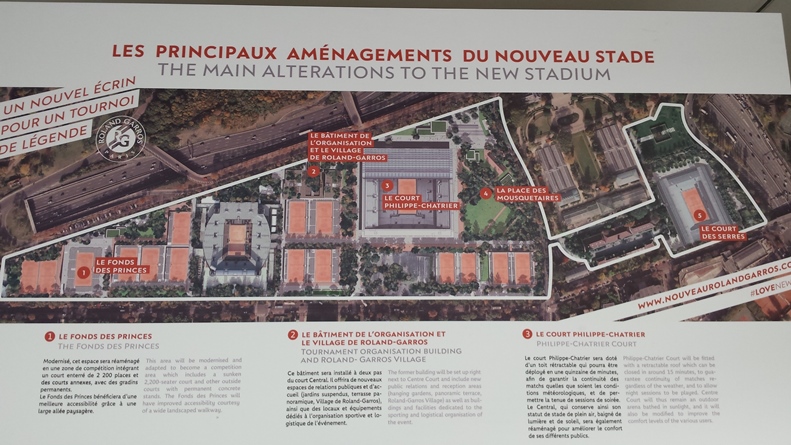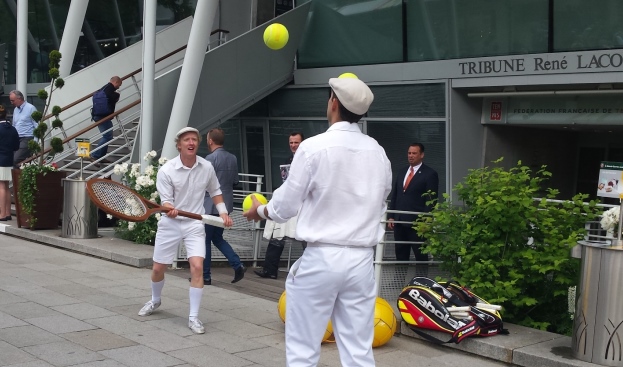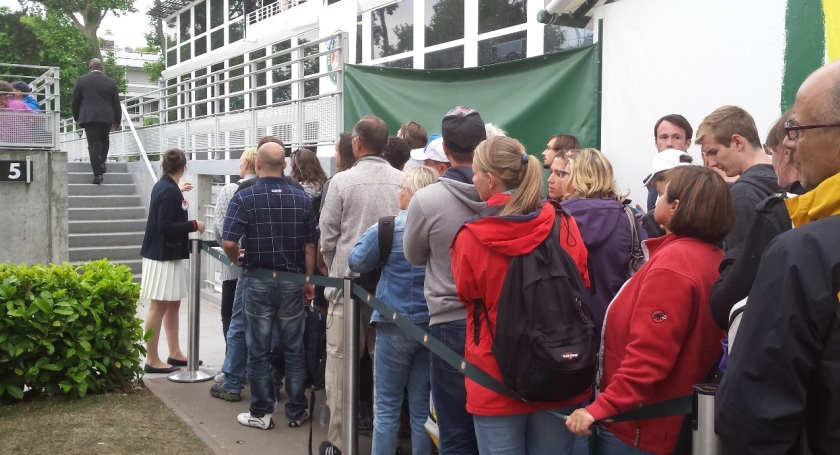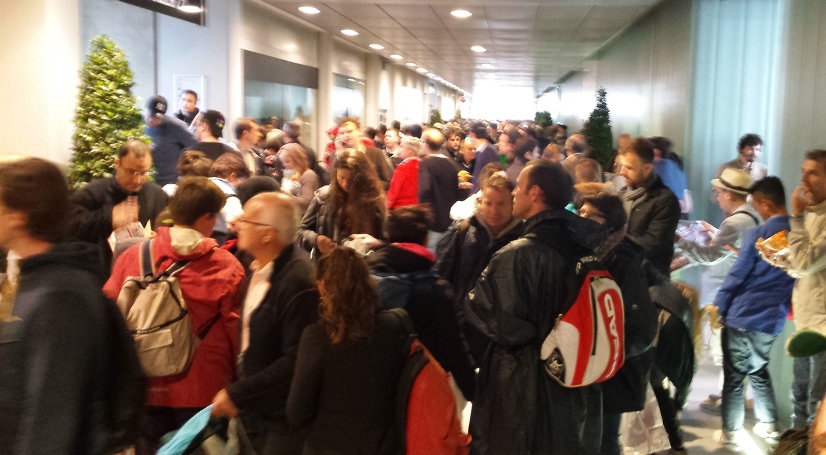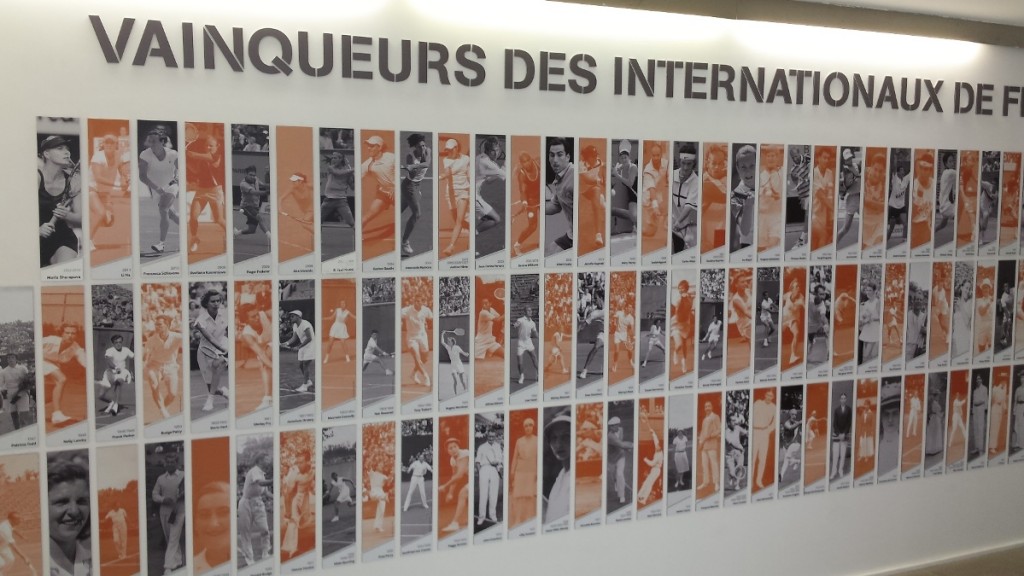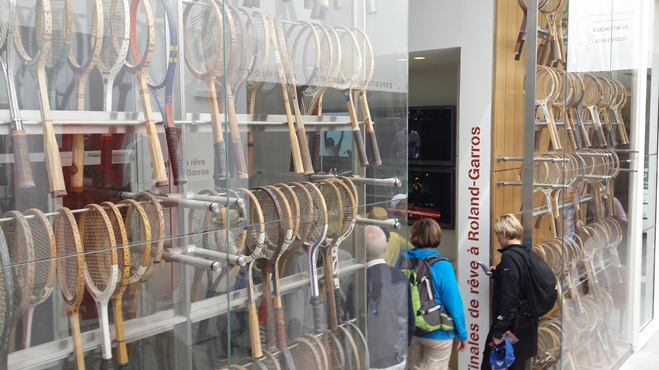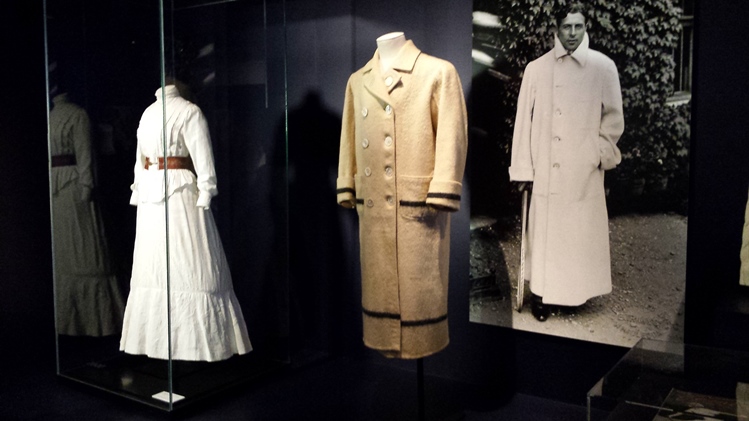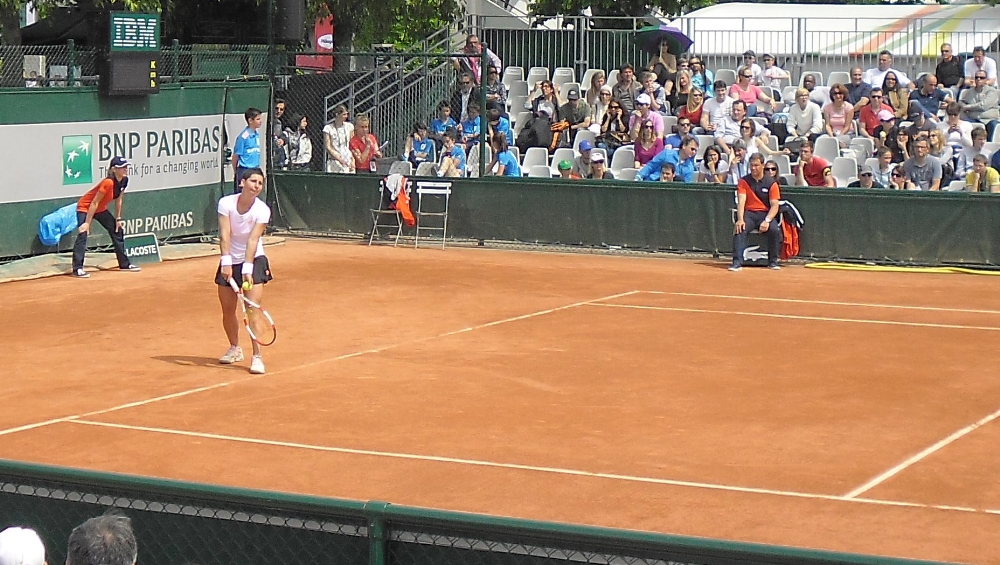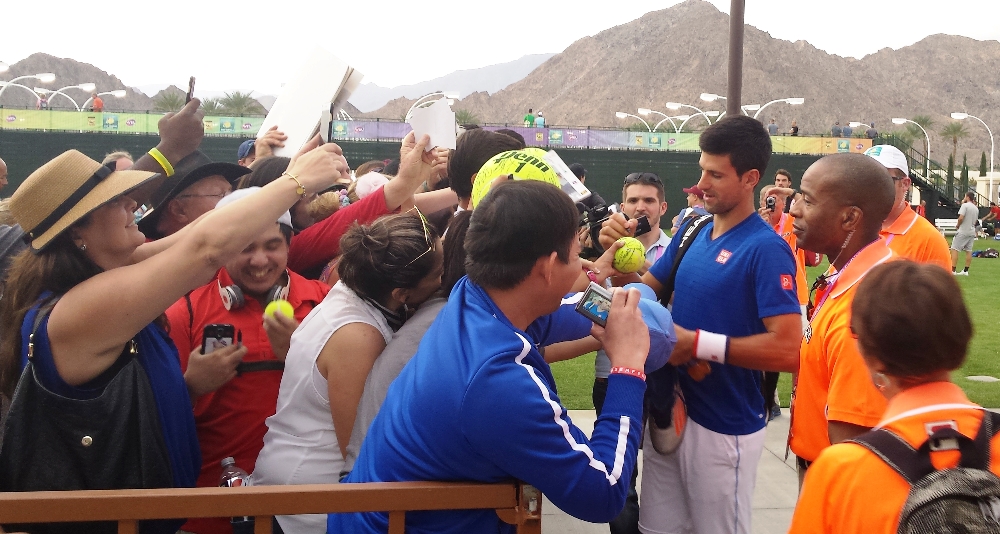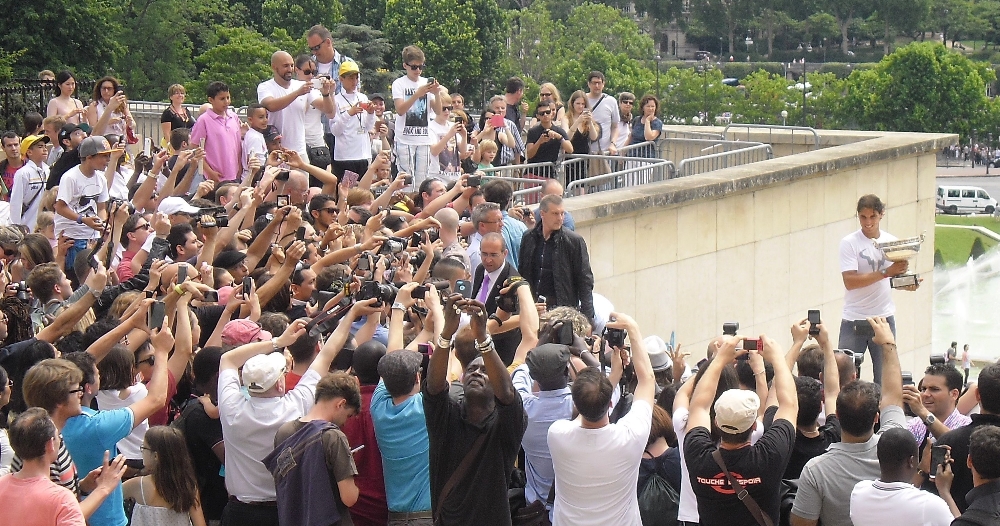First of all, I apologize to the readers who may have come to expect more frequent blog updates when I am present at a tournament. It has been hectic to say the least, with writing obligations outside of MT-Desk mounting up this week. Nonetheless, I woke up this morning, determined to post a write-up at the end of today, so here it is.
The 2014 US Open final between Kei Nishikori and Marin Cilic was lackluster to say the least. It was hard to decide if the match was so one-sided because Cilic played spatial tennis, outclassing Nishikori, or because Nishikori simply performed far below his standard, especially after having beaten the top-seeded Novak Djokovic in the semis. But in terms of score, and tennis quality, it was the least thrilling men’s final match at the Majors last year. So I expected better this afternoon. Cilic was gradually finding his form and Nishikori has looked sharp throughout the week.
Instead, it was another flop, not so much in the score line as in the level of play by both players. Cilic broke immediately to start the match and Nishikori wasted a whole set before starting to do the right thing. He only had a chance to break back at 1-3 down, and instead of keeping the balls deep and looking to out-rally Cilic, he would get impatient and go for broke in the 5th or 6th shot of the rally, mostly from behind the baseline, and make the error. Cilic only had to keep holding the lead with some solid first serves, and he did just that.
It seemed that Kei woke up immediately as the second set began. For those who can go back and watch the match, for example, in the third point of the set (15-15), the Japanese star did something that he neglected (or failed, depending on the perspective) to do since the beginning of the match. He kept the balls deep, did not go for unnecessary, low-percentage winners, and eventually earned the point on a Cilic error. From then on, he cut the unforced errors down largely because he followed that same pattern. Again at 1-0 up, and a break point in his favor, Nishikori once again got the return in, settled for deep shots, kept Cilic on the move, finally collected a backhand in the net by the Croat. Next game at 15-15, Cilic hung in there during a long rally, but having to cover too much ground, the big guy ended the rally by slapping a on-the-run forehand in the net when he was strecthed. Same scenario again occured at the game point to go up 3-0. Funny how the tide can turn when you tweak and adjust small, yet basic, patterns during the points. Nishikori cruised the rest of the set and Cilic, not finding a solution (which was provided for him by Nishikori in the first set), faded away quickly to lose the second set 6-1.
After having the early games decide the outcomes of both first and second sets, it came as no surprise that the same thing happened in the third set. Much less confident now, Cilic double-faulted and missed an easy backhand volley in the net to fall behind in the very first game of the third set, and eventually got broken. Figuring out only at 2-4 down that rallying from the baseline was no longer working with a less generous Nishikori across the net, Cilic got more aggressive and forced the issue. At 3-4 down and Nishikori serving, Cilic took risks on the returns and ventured to the net. At 0-15, he finished the point with a volley winner. At 15-30 he whipped a forehand that left Nishikori at a distance, staring at the winner. He remained aggressive on the return and missed one, on the first break point at 15-40. But Nishikori was feeling the heat, and missed a risky second serve for a double fault on the second break point at 30-40, in an effort to avoid Cilic taking charge on the return. Marin’s body language was extremely positive at that point, pumping his fist regularly.
Then out of nowhere, he makes couple of bad decisions (one, not to attack when he had the chance) and Nishikori gets the important break again to go up 5-4. It seemed that neither player could get in the groove for an extended period of time and both had to battle hard just to keep balls in play and deep. The last game characterized the whole match: 5 total errors by both players, 4 of them complete give-aways. Nishikori held and earned his spot in the finals.
Next on Center Court was the women’s semifinal between Anastasia Pavlyuchenkova and the Ekaterina Makarova. Or so everyone thought! On their way out to the court, both women were told that their match was moved to the Grandstand court. A men’s doubles match, featuring the Bryan brothers, was deemed more worthy of the Center Court. Makarova, the top-seeded player, not only did not play her first two matches on either the Center Court or the Grandstand (played the third on Grandstand), but was probably going to go down in the history of professional tennis as the only top-seeded player in history at a WTA event to never get to play on Center Court before the finals. As it turns out, she retired in the beginning of the third set and did not get that accolade! But if there was ever a slap on a top seed’s face, today was it.
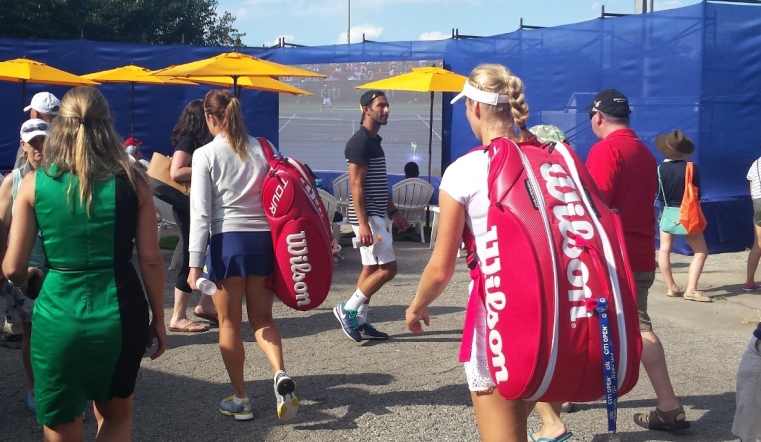
The explanation was that the ATP and the WTA tournaments were two separate events, with the WTA one being a lower-tier tournament forking out less prize money than the men’s, which made it so that the women could be moved to the Grandstand. Let’s be honest, that attitude was obvious anyway from the beginning of the tournament. Prior to Saturday, only 4 women’s matches have been scheduled on the Center Court (all four as the first match of the day, when there is the least amount of crowd on the grounds) whereas men’s matches that were featured there amounted to four times that number.
However, today was unacceptable. You don’t tell the players right before the match that they got demoted to a lesser court, and you certainly don’t do it when it involves the top seed and the no. 12 player in the world Makarova, who had yet to set foot on the Center Court, and Pavlyuchenkova who has been ranked as high as no. 13 in the world (now ranked 40), holder of 7 WTA titles in her career. As far as the “explanation” goes, if the issue is that these are two separate events and not one combined event, then the same committee should not make decisions for both. Nor should you charge one ticket price for both (as @TheBoiledEgg astutely pointed out on Twitter). If the WTA event is the “lesser” event and the spectators come to watch two “separate” events in which one event is taking place on the “lesser” courts, then you designate two separate prices and charge less for those who come to watch the “lesser” event. Sounds ridiculous right? Almost as ridiculous as the “explanation.” Lastly, would the same thing have happened if the match were between Venus Williams (ranked 15) and Svetlana Kuznetsova (ranked 28)? Or if it were between Jelena Jankovic (23) and the American Sloane Stephens (35)? Or better yet, would the reverse have happened if it were a higher tier women’s event and a lower men’s event? To that end, would all the men’s quarterfinals have taken place at the Grandstand on Friday while the women played on the Center Court, as was the case (in reverse) yesterday? I think everyone can guess the answers to these questions.
In the evening session, contrary to most people’s expectations, the second semifinal between John Isner and Steve Johnson greatly exceeded the first semifinal in terms of both quality and suspense. Steve Johnson, having a golden tournament, had two match points at 6-4 up in the thrilling third set tiebreaker. The first one was something to behold. Johnson served and a long rally ensued which meant, as was the case for the most part up to that point, that Johnson would end up winning the point. Instead, Isner played good a baseline rally as you will ever see him do, and outlasted Johnson, finally forcing him into an error. Then, he served an ace to equalize at 6-6. Each player had one more match point, and finally, Isner prevailed 11-9 to deny Johnson his first career final. The big guy served four aces after saving that first match point in spectacular fashion.
Last but not the least, Sloane Stephens, looking for her own first final at a WTA event (amazing, considering how many semifinal appearances she has had, including in some big events) came out to face the in-form Samantha Stosur. From the beginning the scenario was clear. Stephens was stroking her groundstrokes well, and Stosur needed to take risks and cut the points short to win. Sam played the right game for most of the first set, stepping inside the baseline on returns, and going for big shots, especially on her down-the-line backhands. However, Stephens would win the majority of points whenever they got engaged in extended baseline rallies. The first set went to a tiebreaker. Stosur went up 4-2 on a forehand volley error by Stephens and seemed to have the upper hand as they changed sides. Then, a total collapse by Stosur followed. Stephens remained steady as Stosur made mistake after mistake losing the next five points in succession, and the tiebreaker. The worst was yet to come.
In the second set, Stephens, now exuding confidence, efficiently kept the balls deep, pinned Stosur to the baseline, and controlled the rallies. It did not help that Stosur framed more shots than I have ever seen anyone else in a singles match. I wondered if such stats were kept, would Stosur have broken the record. She regularly mishit one or two shots, or more, each game, as the collapse of her game continued. Stephens ended up winning 7-6 6-0, and signed autographs and took selfies with anyone and everyone who came to the court side after the match.
Tomorrow’s singles finals will feature John Isner vs. Kei Nishikori, scheduled to start at 3:00 PM, followed by the women’s finals between Sloane Stephens and Anastasia Pavlyuchenkova. And yes, they will all take place in the Center Court! At least, that is what the schedule says, with no caveats this time.
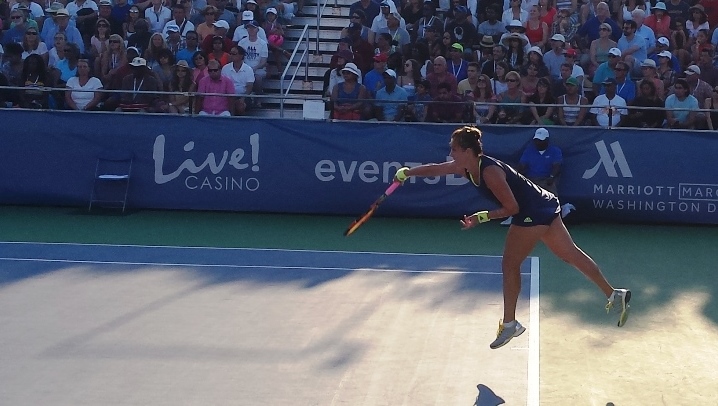 Pavlyuchenkova served this ace on set point to take it to a final set, and it turned out to be her last shot as Makarova retired with a leg injury few moments later
Pavlyuchenkova served this ace on set point to take it to a final set, and it turned out to be her last shot as Makarova retired with a leg injury few moments later
Note: Stay tuned to Mertov’s Tennis Desk on Twitter for live updates, and on-site photos…

